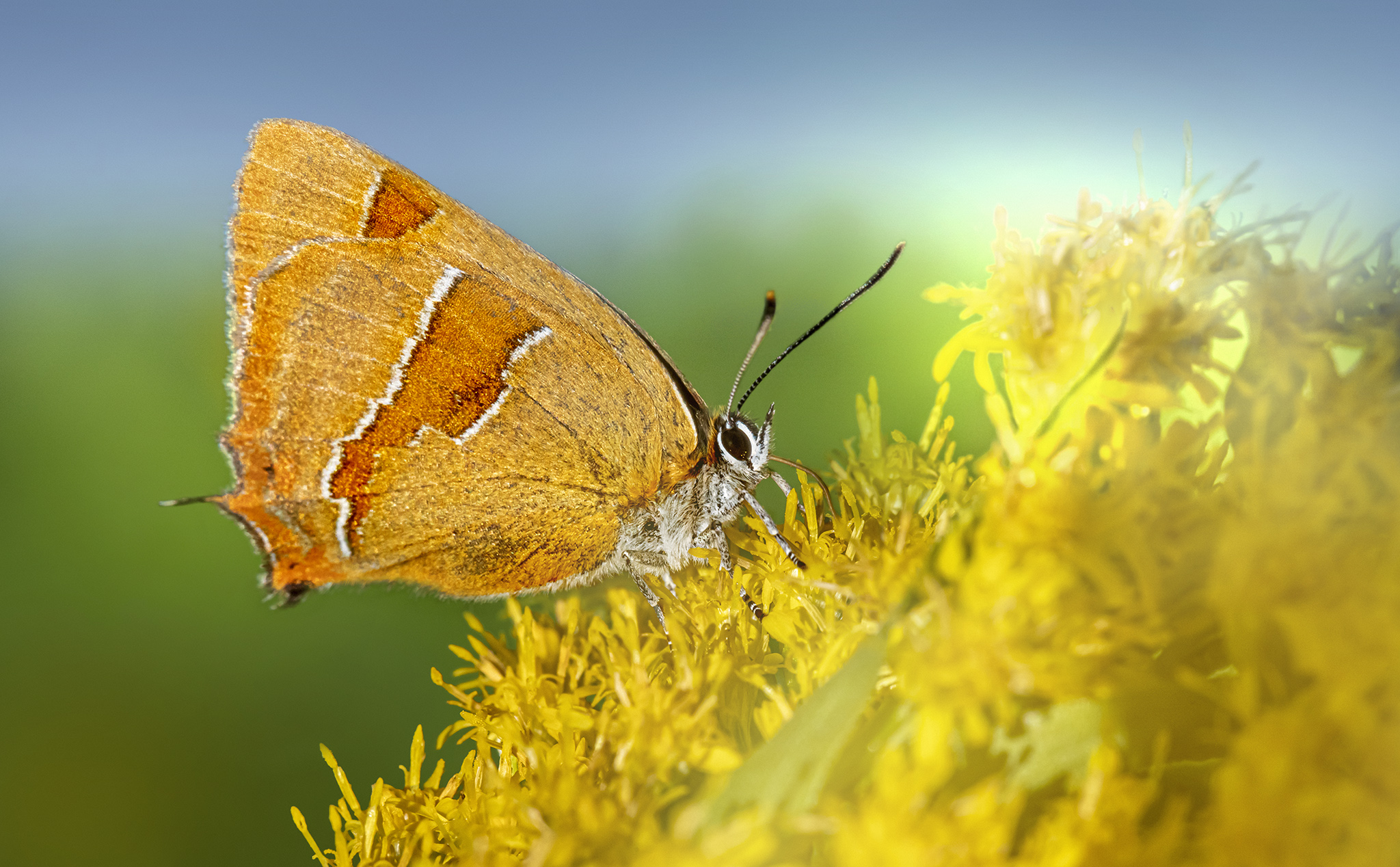The Brown Hairstreak (Thecla betulae) is a beautiful and elusive butterfly that is part of the Lycaenidae family. Known for its striking colors and rarity, this species is of particular interest to butterfly enthusiasts and conservationists.
Description
- Appearance:
- Males: The upper side of the wings is dark brown with a distinctive orange spot near the edge of the forewings.
- Females: The females have a more prominent orange patch on the upper side of their forewings.
- Underside: Both sexes have a brown underside with a characteristic white streak (or “hairstreak”) running across the hindwings.
- Size: The wingspan ranges from 37 to 44 millimeters.
Habitat
- Distribution: The Brown Hairstreak is found throughout Europe and parts of Asia, but it is considered rare in many areas due to its specific habitat requirements.
- Preferred Environment: This species prefers hedgerows, woodland edges, and scrubby areas where its host plants, particularly blackthorn (Prunus spinosa), are abundant.
Behavior and Ecology
- Flight Period: The adults typically fly from late July to early October, with peak activity in August and September.
- Diet:
- Larvae: The caterpillars feed mainly on blackthorn leaves.
- Adults: Adult butterflies feed on nectar from a variety of flowers, including bramble, thistles, and other late-summer blooms.
- Reproduction:
- Egg Laying: Females lay eggs singly on young blackthorn twigs. The eggs overwinter and hatch in early spring.
- Larvae and Pupae: The larvae feed on blackthorn leaves and pupate in the undergrowth or leaf litter.
Conservation
- Threats: The primary threats to the Brown Hairstreak include habitat loss due to agricultural intensification, hedgerow removal, and inappropriate land management practices.
- Conservation Efforts: Efforts to conserve the Brown Hairstreak focus on protecting and managing hedgerows and woodland edges. Encouraging traditional hedgerow management techniques, such as rotational cutting, helps maintain suitable habitats for this species.
Observing Brown Hairstreaks
- Best Times: The best time to observe the Brown Hairstreak is during its flight period from late summer to early autumn.
- Watching Tips: Look for them in sunny, sheltered areas along hedgerows and woodland edges. They are often seen feeding on nectar from flowers or basking on leaves with their wings closed.
Interesting Facts
- Elusive Nature: The Brown Hairstreak is known for its elusive behavior, often remaining high in the canopy and rarely coming down to ground level, making it a challenging butterfly to observe.
- Mating Habits: Males are territorial and can be seen patrolling their territories or basking on sunlit leaves, waiting for females.
- Eggs: The eggs of the Brown Hairstreak are easily recognizable and can be found on blackthorn twigs during the winter months, providing a clue to the presence of this species even when the adults are not visible.
Summary
The Brown Hairstreak (Thecla betulae) is a fascinating and beautiful butterfly that plays an important role in the biodiversity of hedgerow and woodland edge ecosystems. Its dependence on specific habitats and host plants makes it a key species for conservation efforts focused on preserving traditional landscapes. Observing the Brown Hairstreak in its natural habitat is a rewarding experience for those interested in the delicate and complex world of butterflies.
Visited 1,399 times, 3 visit(s) today
Views: 2746
Subscribe to the newsletter:
